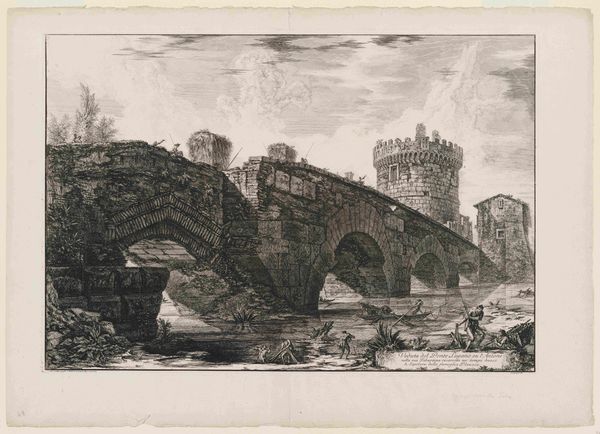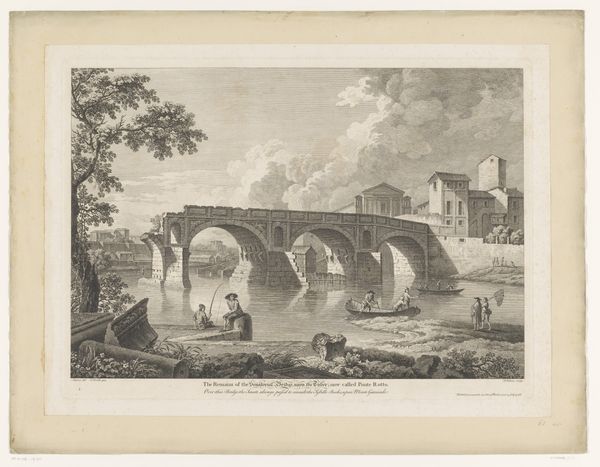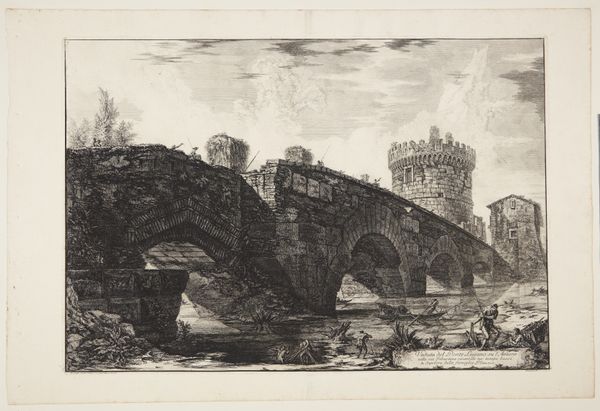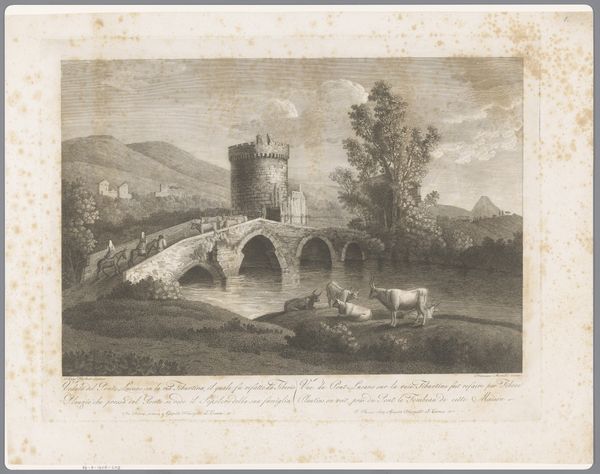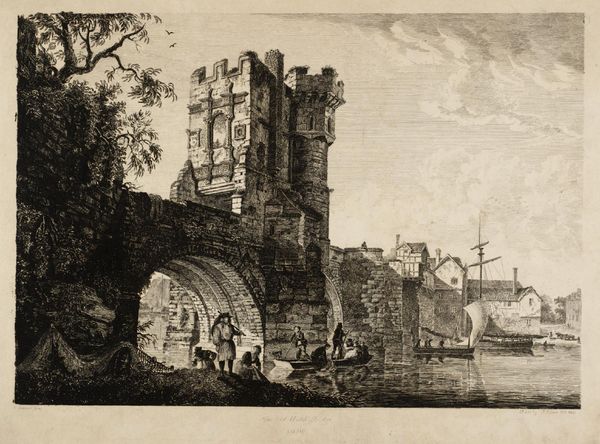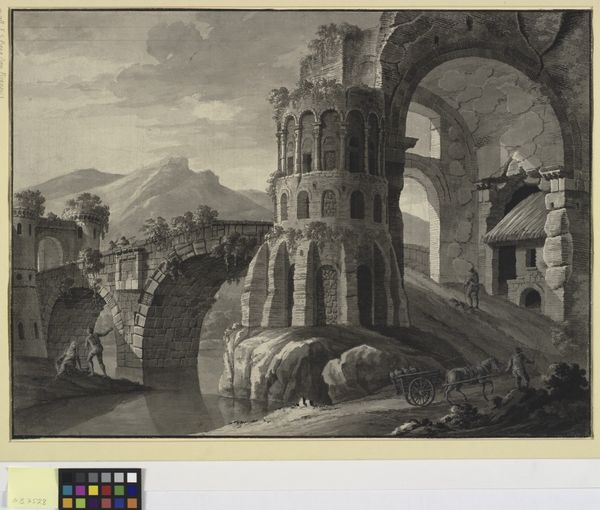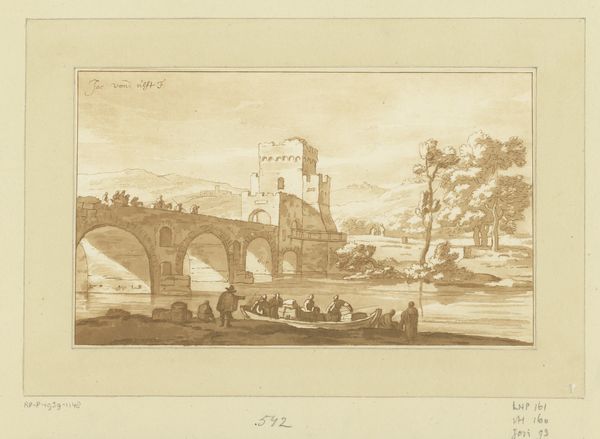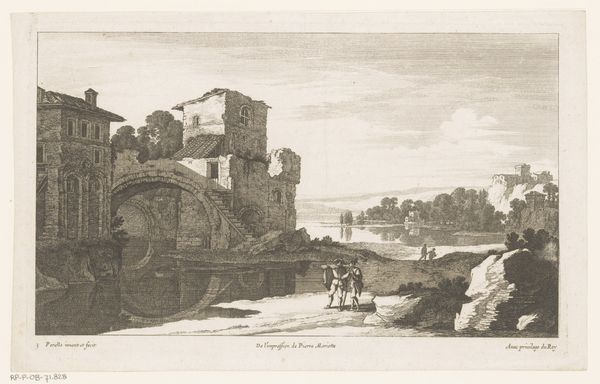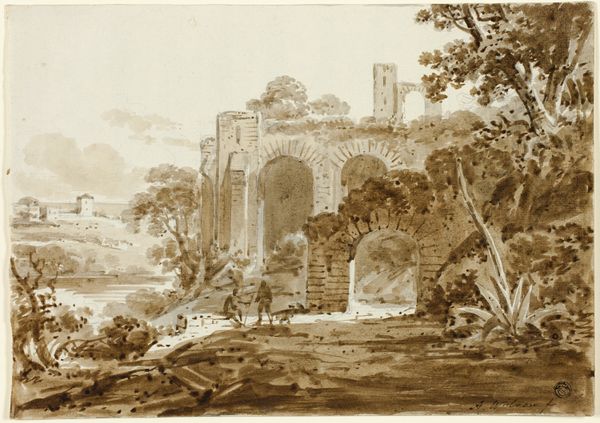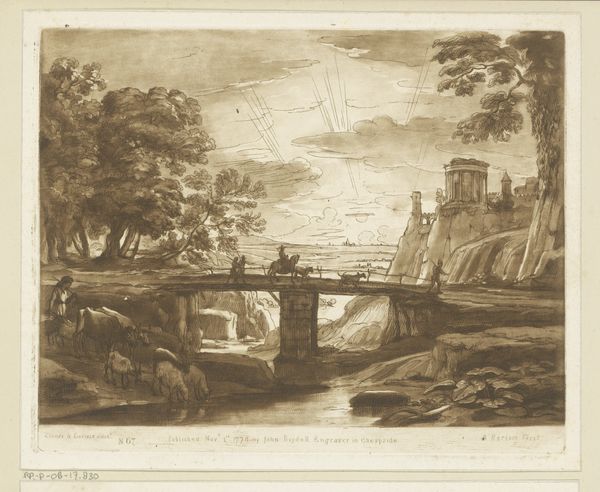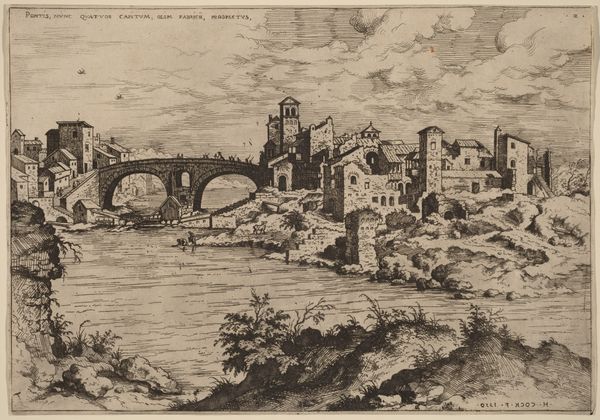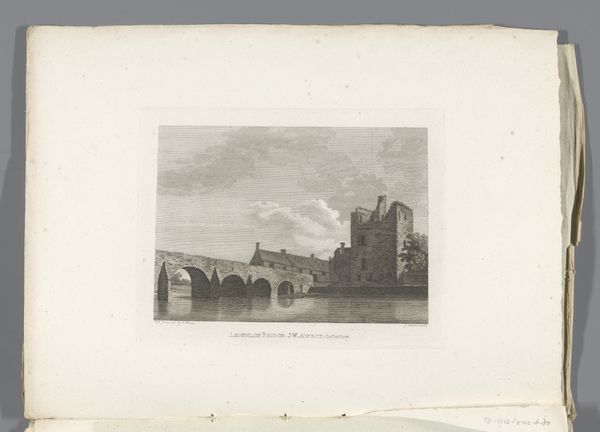
Architectural fantasy with an antique bridge over a river, and a watermill in the foreground 1777
0:00
0:00
drawing, ink
#
drawing
#
neoclacissism
#
landscape
#
ink
#
cityscape
#
watercolour illustration
#
genre-painting
#
pencil art
Dimensions: 423 mm (height) x 572 mm (width) (bladmaal)
Editor: Here we have Robert Adam’s “Architectural fantasy with an antique bridge over a river, and a watermill in the foreground,” made in 1777 using ink. The grayscale tones and ruined architecture give it a very dreamlike, almost melancholic feel. What stands out to you when you look at this drawing? Curator: The bridge looms large, doesn't it? Not merely as a physical structure, but as a symbol. Bridges connect, they represent transitions, passages from one state to another. And observe the ruined state - it speaks to the impermanence of even the grandest human endeavours. Do you get a sense of memory, perhaps the fragments of a forgotten empire, embedded within it? Editor: Absolutely, the ruins really evoke a sense of the past, but there's a strange blend of decay and idyllic life here with the figures relaxing in the foreground, next to a working watermill. Curator: Precisely! And consider the watermill – an emblem of industry, lifeblood of a community. Juxtapose it with the decaying grandeur above. Adam seems to be suggesting something about the cyclical nature of civilizations, the interplay between innovation and nostalgia, doesn't he? Editor: It's a powerful contrast, like progress built on the bones of history. The figures almost seem oblivious to the crumbling architecture. Curator: Or perhaps, they've integrated that history into their present. Think of it as cultural memory made tangible, part of their everyday. Do you notice how Adam uses the landscape itself to soften the starkness of the ruins, weaving nature and civilization together? Editor: Yes, the romantic, idealized landscape certainly counterbalances the severity of the architecture. I hadn't considered the 'cultural memory' aspect so explicitly. Curator: Visual symbols operate on many levels, from the obvious to the deeply ingrained. This piece beautifully layers those meanings, making us reflect on time, change, and the human spirit. Editor: Looking at it with your perspective in mind really shifts the focus from simple decay to something more profound about cultural persistence and adaption. Thanks for your insight!
Comments
No comments
Be the first to comment and join the conversation on the ultimate creative platform.

